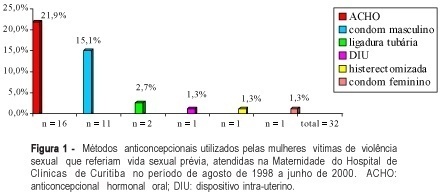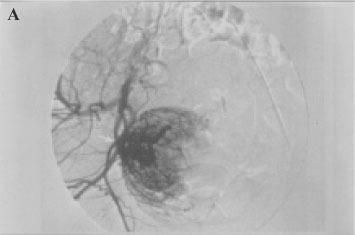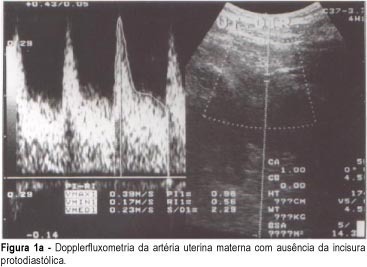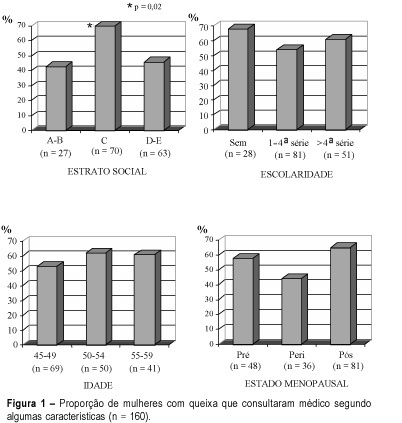Summary
Revista Brasileira de Ginecologia e Obstetrícia. 2001;23(9):583-587
DOI 10.1590/S0100-72032001000900006
Purpose: to investigate the social and demographic characteristics of women victims of sexual abuse; to evaluate their sexual experience before the abuse; to investigate the use of contraceptive methods at the time of the violence, and to observe the interval between the occurrence of the abuse and the search for a hospital attendance. Methods: 117 encoded records were evaluated, of a total of 134, obtained regarding the attendance of women victims of sexual abuse at the Maternity of the Hospital de Clinicas, in Curitiba, in the period between August, 1998 and June, 2000. Results: the age of the women varied from 5 to 49 years and half of them were young, with 19 years at the most. The majority of them were graduates or attending high school, 41 (41,0%) were students and 82 (82,0%) were single. The sexual experience analysis showed that one third (32,4%) was virgin. Among the women who reported sexual experience, 35 (47,9 %) were using a contraceptive method when they suffered abuse. There was a range from 2 hours to 2 months since the occurrence of the sexual violence until the search for attendance. Conclusions: the number of women victims of sexual abuse showed the importance of specialized attendance and also the necessity of a multidisciplinary attendance, since among the victims there are children who need special attention. The period of time between the sexual abuse and the search for hospital attendance was large, showing that there should be more information available to the population in relation to the prevention of unwanted pregnancy and sexually transmitted diseases, including HIV infection.

Summary
Revista Brasileira de Ginecologia e Obstetrícia. 2001;23(9):589-595
DOI 10.1590/S0100-72032001000900007
Purpose: to compare the embryonic development obtained with two different culture methods (sequential medium or coculture in Vero cells). Methods: oocytes were recovered from 110 patients and submitted toin vitro fertilization. The embryos of half of the patients were co-cultured with Vero cells and the embryos of the other half were cultured in sequential G1:2/G2:2 medium for five days. The embryos were transferred on the 5th day after fertilization after morphological evaluation for the determination of blastula formation rate. Pregnancy was defined by ultrasonography and a fetal heartbeat was determined 13 weeks after transfer. Results: the expanded blastocyst rate found in our study was 15.9 and 14% with Vero cells and G1:2/G2:2, respectively. With Vero cells 36.0% of patients became pregnant and the implantation rate was 18.9%. When G1:2/G2:2 was used, the pregnancy and implantation rates were 28.9 and 14.9%, respectively. Only 17 patients had blastocysts after coculture in Vero cells, with a 76.5% pregnancy rate and a 63.5% implantation rate. When embryos were cultured in G1/G2, 21 patients presented blastocysts and the pregnancy and implantation rates were 57.1 and 76.0%, respectively. Conclusion: there was no significant difference in pregnancy or implantation rates between the 2 types of culture. When expanded blastocysts were transferred, the implantation and pregnancy rats increased with both culture types. In these patients, regardless of the type of culture used, a larger number of oocytes was obtained, suggesting that the implantation and pregnancy rates are affected not only by the culture conditions but also by the quality of the eggs, since "good responders" had better results.
Summary
Revista Brasileira de Ginecologia e Obstetrícia. 2001;23(9):597-602
DOI 10.1590/S0100-72032001000900008
Purpose: to evaluate the results of uterine artery embolization (UAE) in the treatment of uterine leiomyomas. Methods: eighteen patients with ultrasonographic diagnosis of uterine leiomyomas were submitted to UAE with polyvinyl alcohol (PVA) particles. The femoral arteries are the access sites until selective catheterization of the uterine arteries. Imaging regarding uterine volume was performed before the procedure and three months after wards. Clinical follow-up was performed at regular intervals after the procedure to assess patient menstrual characteristics and uterine volume. Results: three procedures were technically unsuccessful because of failure of superselective catheterization. Control of menorrhagia and pelvic pain was reported at three months after the procedure by 86 and 60% of patients, respectively. The initial mean uterine volume was 381 cm³ and after 3 months, 263 cm³. The mean uterine volume reduction was 27.4% after three months of follow-up. Clinical and biochemical findings consistent with ovarian failure were observed in three (20%) patients. Conclusions: UAE represents a new therapeutic approach in the treatment of uterine leiomyomas. The risk of ovarian failure after the procedure limits its use to patients aged 45 years or without pregnancy wish.

Summary
Revista Brasileira de Ginecologia e Obstetrícia. 2001;23(7):417-422
DOI 10.1590/S0100-72032001000700002
Purpose: to investigate risk factors associated with accretion in placenta previa (PP) patients. Methods: this was a retrospective case-control study of all the records of patients who delivered between 1986-1998 at Maternidade Escola de Vila Nova Cachoeirinha (São Paulo) with a diagnosis of placenta previa. The groups with and without accretion were compared regarding age, parity, previous history of miscarriage, curettage and cesarean section, type of PP and predominant area of placental attachment. Possible associations between the dependent (accretion) and independent (maternal and placental characteristics) variables were evaluated using the chi² test, univariate and multivariate analyses. Results: reviewing 245 cases of PP, two risk factors were significantly associated with accretion: central placenta previa (odds ratio (OR): 2.93) and two or more previous cesarean sections(OR: 2.54). Based on these data, a predictive model was constructed, according to which a patient with central PP and two more previous cesarean sections has a 44.4% risk for accretion. Conclusions: results of the current study may help obstetricians in the classification of their patients with PP in different risk categories for accretion. This could be useful in preparing for possible delivery complications in those patients considered at a higher risk for accretion.
Summary
Revista Brasileira de Ginecologia e Obstetrícia. 2001;23(7):423-427
DOI 10.1590/S0100-72032001000700003
Purpose: to evaluate the impact of birth time interval between twins in relation to the morbidity and mortality of the second newborn twin. Methods: this is a retrospective study of 50 women with twin pregnancy at the `Maternidade Pró-Matre de Vitória' who gave birth to 100 alive newborns through the vaginal canal, weighing each over 500 g and not having any major malformations. The newborns were separated into two groups: G1 (first twin) and G2 (second twin). The following criteria were considered to be indicative of newborn morbidity: asphyxia at birth, characterized by Apgar index lower than 7 in the first minute of life; respiratory distress syndrome detected by clinical and radiological findings, and hospitalization period longer than 4 days. In-hospital mortality was analyzed as well. Cut off was at every 5 minutes, up to 35 minutes, to study the time interval between the twin (deltat) delivery. A time-span (deltat) analysis was also carried out up to 5 minutes: 6-10, 11-15, 16-20, and 21-150 minutes. Results: there were no statistically significant differences between the second twin's morbidity/mortality in relation to the first, considering the aforesaid cutoff and time-span levels. Conclusion: delivery time interval between G1 and G2 did not influence the second twin's morbidity and mortality; however, in the assistance of the second twin's delivery, it is absolutely necessary to individualize the characteristics of each case, not allowing any anxiety to set in through untimely and potentially damaging procedures.
Summary
Revista Brasileira de Ginecologia e Obstetrícia. 2001;23(7):431-438
DOI 10.1590/S0100-72032001000700004
Purpose: to evaluate the association between the presence of diastolic notch in the maternal uterine arteries, and the histopathological changes of the uteroplacental vessels. Methods: transversal study of 144 women with single pregnancy interrupted by cesarean section between 27 and 41 weeks. In this sample, 84 had pregnancies complicated by preeclampsia and the other 60 were normal. In this group, Doppler study of both uterine arteries and placental bed biopsy was performed. Results: of the total of 144 patients, 88 patients (61%) had a biopsy fragment that was considered representative of the placental bed. The diastolic notch was present in 40 patients (70%) of the total of cases with inadequate physiologic alterations and absent in 28 patients (90%) of the total of cases with physiologic alterations (p=0.0000). The Doppler study showed 70% sensitivity, 90% specificity, 44% positive predictive value and 97% negative predictive value. The association between bilateral diastolic notch of uterine arteries and acute atherosis in the placental bed was also significant (24 out of 25 cases -- p=0.000). The Doppler study showed 96% sensitivity, 70% specificity, 26% positive predictive value and 99% negative predictive value, while for arteriolosclerosis its results were 80% sensitivity, 55% specificity, 17% positive predictive value and 96% negative predictive value. Conclusions: the diastolic notch in the maternal uterine is a safe indicator of pathological vessel alteration in the placental bed. The adequate trophoblast migration into the myometrium, revealed by physiologic changes, results in the absence of bilateral diastolic notch of the maternal uterine arteries.

Summary
Revista Brasileira de Ginecologia e Obstetrícia. 2001;23(7):439-443
DOI 10.1590/S0100-72032001000700005
Purpose: to evaluate the percentage of 45- to 60-year-old women complaining of urinary incontinence, who look for medical treatment, and the factors possibly associated with the decision of visiting the doctor and the reasons for not doing so. Methods: a secondary analysis of a population-based survey on climacterium and menopause in women living in the city of Campinas, São Paulo state, was carried out through a descriptive, exploratory and cross-sectional population study. A total of 456 women between 45 and 60 years of age were selected through a sampling process. The age at menopause and its associated factors were evaluated, as well as the prevalence of climacteric symptoms, the use of medical care, self-perception of the health status, and the sociocultural, sociodemographic and socioeconomic characteristics. Urinary incontinence complaint and the search for medical help due to the presence of symptoms were explored. The data were collected through home interviews, using a structured and pretested questionnaire provided by the International Health Foundation/International Menopause Society and by the North American Menopause Society, and adapted by the authors. The statistical analysis was performed using Fisher's exact test. Results: thirty-five percent of the interviewees reported constant or intermittent stress incontinence, although only 59% of the patients with the complaint sought medical help. Conclusion: the majority of the women presenting urinary incontinence do not complain to the doctor if they are not questioned objectively.

Summary
Revista Brasileira de Ginecologia e Obstetrícia. 2001;23(7):445-448
DOI 10.1590/S0100-72032001000700006
Purpose: to evaluate the results of 64 hysteroscopic endometrial ablations using a resectoscope in women with abnormal uterine bleeding of benign etiology and nonresponsive to clinical measures and to describe the failures and their associated conditions. Methods: sixty-four patients with abnormal uterine bleeding were submitted to the intervention between April 1994 and February 2000. The mean age was 42.9 years and the mean parity, 2.6 deliveries. Diagnostic hysteroscopy and endometrial biopsy were performed preoperatively. Before surgery, two women received gestrinone, six danazol and 44 GnRH analogue. During the surgery electric cauterization of the fundus uteri and cornual regions was made. Afterwards, with a resectoscope, the endometrium was removed as far as 1 cm above the internal ostium, and as deep as 2 to 3 mm into the myometrium. The uterine distension was obtained with 1.5% glycine and since two years ago with 3% manitol. The average follow-up was 11.5 months. After six months of endometrial ablation, the patients with persistence of symptoms were submitted to hysterectomy. Results: amenorrhea occurred in 31.2% of the patients and hypomenorrhea in 45.3%. The abnormal bleeding was maintained in 23.5%. There was one uterine perforation during the dilatation of the cervix. Results were better in the higher age and parity ranges and in the women who received GnRH analogues (p=0.03). Where the method was not successful there was a statistically significant frequency of submucous myoma (p=0.04) and a nonsignificant increase of secretory endometrium (p=0.12). Conclusions: the method is useful for the management of abnormal uterine bleeding of benign etiology. Previous administration of GnRH analogue is recommended. We suggest a special follow-up for the younger, low parous women, and those with submucous myoma, because they are the group with the poorest results.